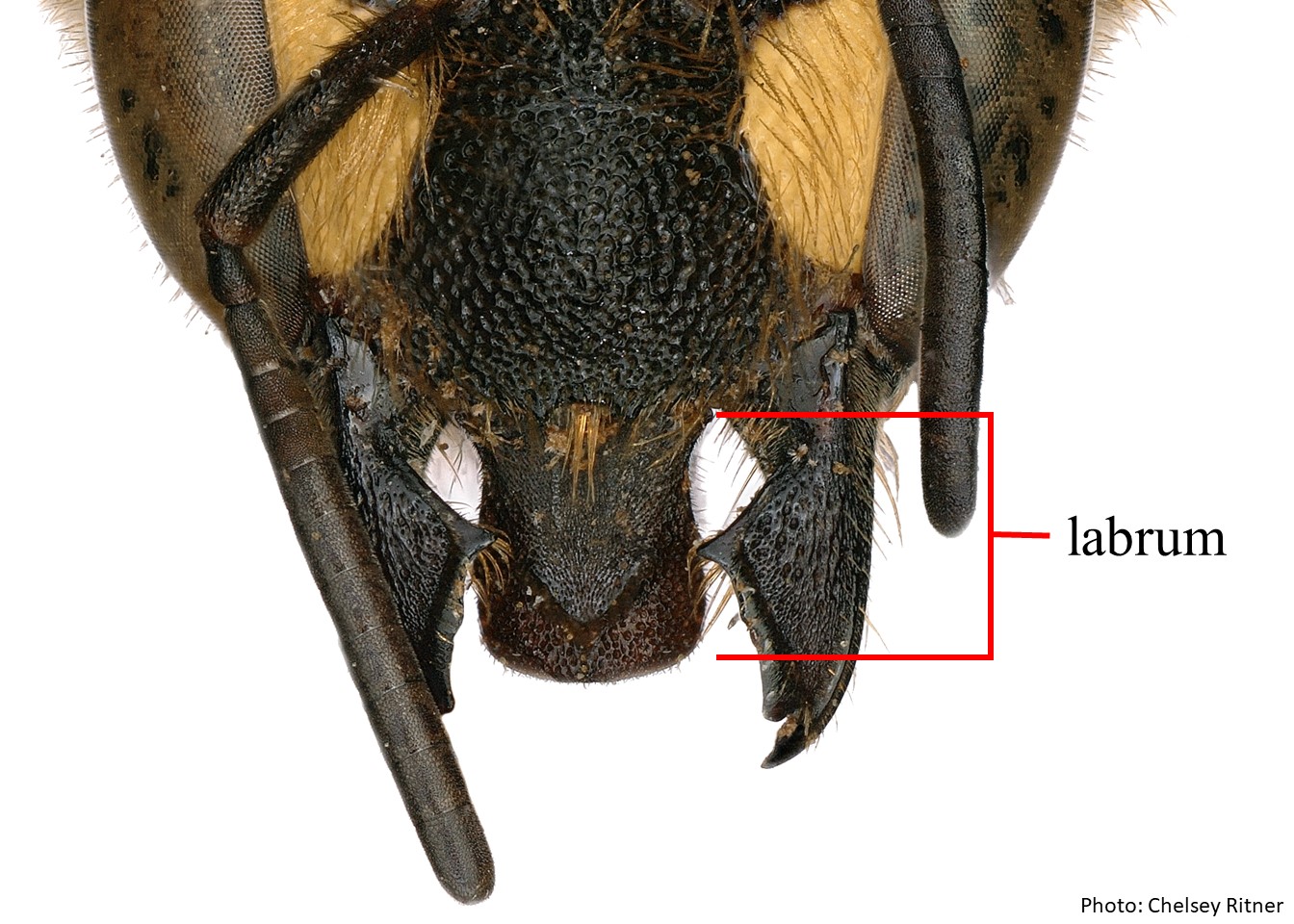Family: Apidae
Subfamily: Xylocopinae
Tribe: Ceratinini
Genus: Ceratina Latreille, 1802
Subgenus: Hirashima Terzo and Pauly, 2001
Common name: small carpenter bees
Ceratina (Hirashima) have dull black coloration and deeply punctured integumentintegument:
a tough, protective outer layer
(Eardley et al. 2010Eardley et al. 2010:
Eardley, C., M. Kuhlmann, and A. Pauly. 2010. The Bee Genera and Subgenera of sub-Saharan Africa. Abc taxa 7: 1-145.). The body length can be between 5–8.5 mm (Friese 1905Friese 1905:
Friese, H. 1905. Die Keulenhornbienen Afrikas Genus Ceratina . Wiener entomologische Zeitung 24: 1ndash;24.).
(modified from Pauly et al. 2001Pauly et al. 2001:
Pauly A., Brooks R.W., Nilsson L.A., Apesenko Y., Eardley C.D., Terzo M., Griswold T., Schwarz M., Munzinger J., and Y. Barbier. 2001. Hymenoptera Apoidea de Madagascar et des Iles Voisines. Annalen Zoologische Wetenschappen amp; Annales Sciences Zoologiques 286: 1ndash;406.; Michener 2007Michener 2007:
Michener, C.D. 2007. The Bees of the World (2nd ed.). Johns Hopkins University Press, Baltimore and London, 953 pp.; Eardley et al. 2010Eardley et al. 2010:
Eardley, C., M. Kuhlmann, and A. Pauly. 2010. The Bee Genera and Subgenera of sub-Saharan Africa. Abc taxa 7: 1-145.)
 as long as wide or longer.
as long as wide or longer. without a gradulusgradulus:
without a gradulusgradulus:Ceratina (Hirashima) resembles Ceratina (Ctenoceratina) in their strongly punctured black integumentintegument:
a tough, protective outer layer
, spine on hind tibiatibia:
the segment of the leg, between the femur and the tarsus, and keel or protuberanceprotuberance:
rising or produced above the surface or the general level of a feature
on T6T6:
the segments on the top side of the abdomen, often abbreviated when referring to a specific segment to T1, T2, T3, T4, T5, T6, or T7 . C. (Hirashima) can be distinguished by the lack of the spine-like tergal and sternal setaesetae:
. C. (Hirashima) can be distinguished by the lack of the spine-like tergal and sternal setaesetae:
a still hair-like structure or bristle
that are present in C. (Ctenoceratina) (Michener 2007Michener 2007:
Michener, C.D. 2007. The Bees of the World (2nd ed.). Johns Hopkins University Press, Baltimore and London, 953 pp.; Pauly et al. 2001Pauly et al. 2001:
Pauly A., Brooks R.W., Nilsson L.A., Apesenko Y., Eardley C.D., Terzo M., Griswold T., Schwarz M., Munzinger J., and Y. Barbier. 2001. Hymenoptera Apoidea de Madagascar et des Iles Voisines. Annalen Zoologische Wetenschappen amp; Annales Sciences Zoologiques 286: 1ndash;406.).
Ceratina (Hirashima) have been observed visiting flowers from the following genera: Asystasia (Acanthaceae), Lantana (Verbenaceae), Lobelia (Campanulaceae), Ipomoea (Convolvulaceae), and Portulacca (Portulacaceae) (Pauly et al. 2001Pauly et al. 2001:
Pauly A., Brooks R.W., Nilsson L.A., Apesenko Y., Eardley C.D., Terzo M., Griswold T., Schwarz M., Munzinger J., and Y. Barbier. 2001. Hymenoptera Apoidea de Madagascar et des Iles Voisines. Annalen Zoologische Wetenschappen amp; Annales Sciences Zoologiques 286: 1ndash;406.).
Ceratina (Hirashima) nyassensis has been known to make nests in hollow and dry stems, with only two to three cells per stem (Pauly et al. 2001Pauly et al. 2001:
Pauly A., Brooks R.W., Nilsson L.A., Apesenko Y., Eardley C.D., Terzo M., Griswold T., Schwarz M., Munzinger J., and Y. Barbier. 2001. Hymenoptera Apoidea de Madagascar et des Iles Voisines. Annalen Zoologische Wetenschappen amp; Annales Sciences Zoologiques 286: 1ndash;406.).
Ceratina (Hirashima) contains nine described species and likely several more undescribed species (Eardley et al. 2010Eardley et al. 2010:
Eardley, C., M. Kuhlmann, and A. Pauly. 2010. The Bee Genera and Subgenera of sub-Saharan Africa. Abc taxa 7: 1-145.).
There are no known invasives.
The subgenus Hirashima ranges from Tanzania and Nigeria, and south to South Africa, Madagascar, and the islands of Seychelles (Michener 2007Michener 2007:
Michener, C.D. 2007. The Bees of the World (2nd ed.). Johns Hopkins University Press, Baltimore and London, 953 pp.).

Distribution map generated by Discover Life -- click on map for details, credits, and terms of use.
Eardley, C., M. Kuhlmann and A. Pauly. 2010. The Bee Genera and Subgenera of sub-Saharan Africa. Abc taxa 7: 145 pp.
Friese, H. 1905. Die Keulenhornbienen Afrikas Genus Ceratina. Wiener entomologische Zeitung 24: 1–24.
Michener, C.D. 2007. The Bees of the World (2nd ed.). Johns Hopkins University Press, Baltimore and London, 953 pp.
Pauly, A., R.W. Brooks, L.A. Nilsson, Y. Apesenko, C.D. Eardley, M. Terzo, T. Griswold, M. Schwarz, J. Munzinger, and Y. Barbier. 2001. Hymenoptera Apoidea de Madagascar et des Iles Voisines. Annalen Zoologische Wetenschappen & Annales Sciences Zoologiques 286: 390 pp.